The latest in our Working in the Sport series, we’ve covered pilot, instructor, freefly coach, this time it’s rigging…
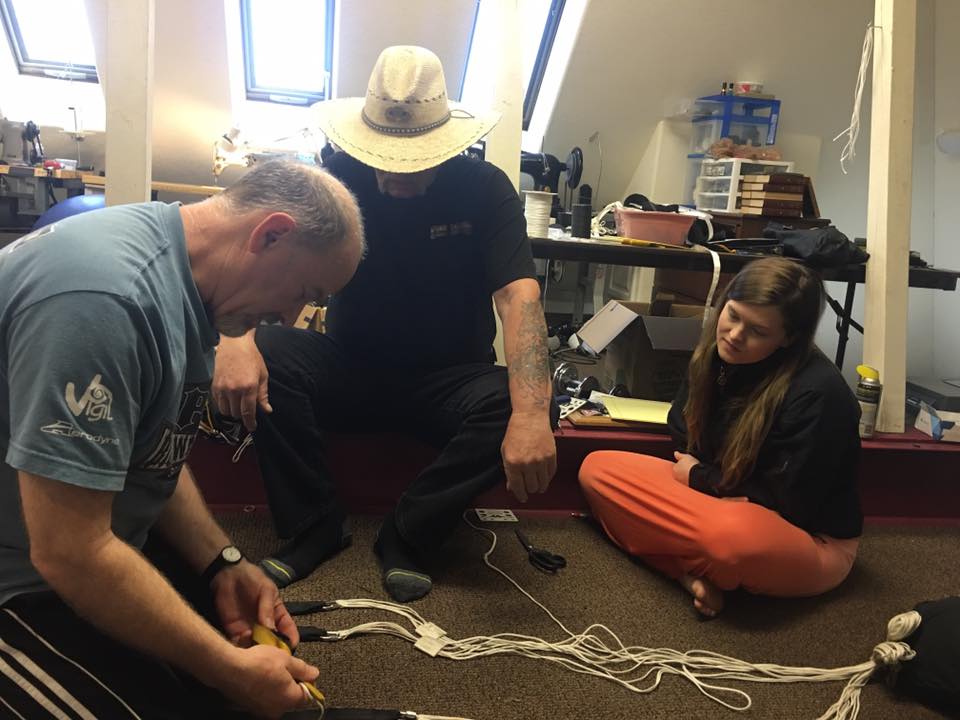
Photo by Patricia MacDonald
We talk to Master Rigger Ted Farnsworth, who’s been jumping for 42 years, and started rigging in his first year. He has over 12,000 jumps and over 4,000 reserve packjobs. Ted is a keen, talented skydiver with multiple world records and state records to his name, including the current sequential world record.
Ted, why did you decide rigging was your goal from when you started jumping in 1980?
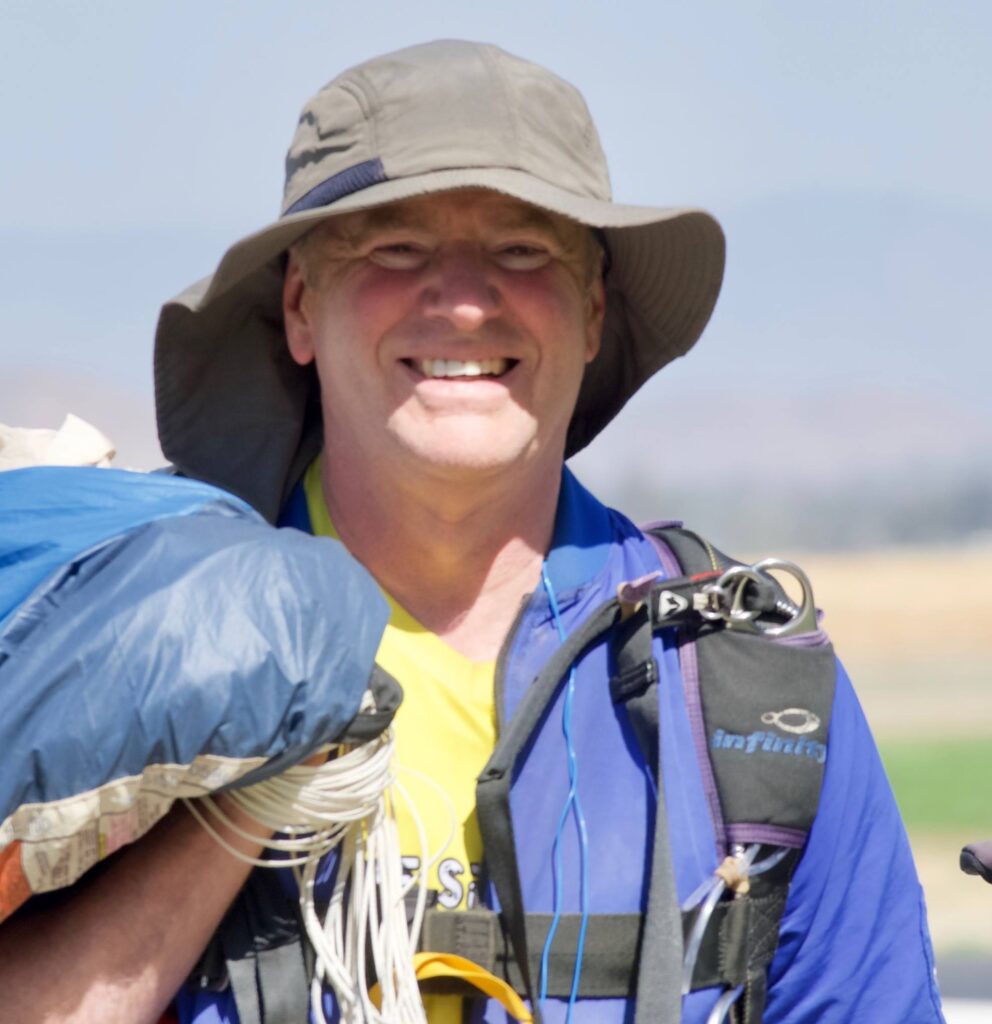
The first season of my skydiving career I watched a friend die due to a rigger error on his reserve. I realized at that time that I did not know what I was looking at when I looked at his gear. I did not understand what had gone wrong.
I decided I had to either quit skydiving or learn about parachute equipment. So, I took a rigging course. After the rigging course I decided to keep skydiving but I felt uncomfortable packing a reserve without direct supervision, because what happened to my friend.
It took me 17 years to overcome my reticence to pack a reserve without someone checking my steps.
Every time I close a reserve, I close my eyes and I see my friend going-in right in front of me, so I take this job very seriously.
When did you qualify as a rigger?
I packed my first reserve in 1980, during a rigger’s course that I took then. But I didn’t get my actual rigger’s ticket until 1997. In the meantime I worked for two different rigging shops and one manufacturer, as well as packing sport mains at drop zones. I completed my Senior Rigger’s ticket in 1997 and my Master Rigger’s ticket in 2007.
Do you work in any other area apart from skydiving?
I retired from another career 15 years ago.
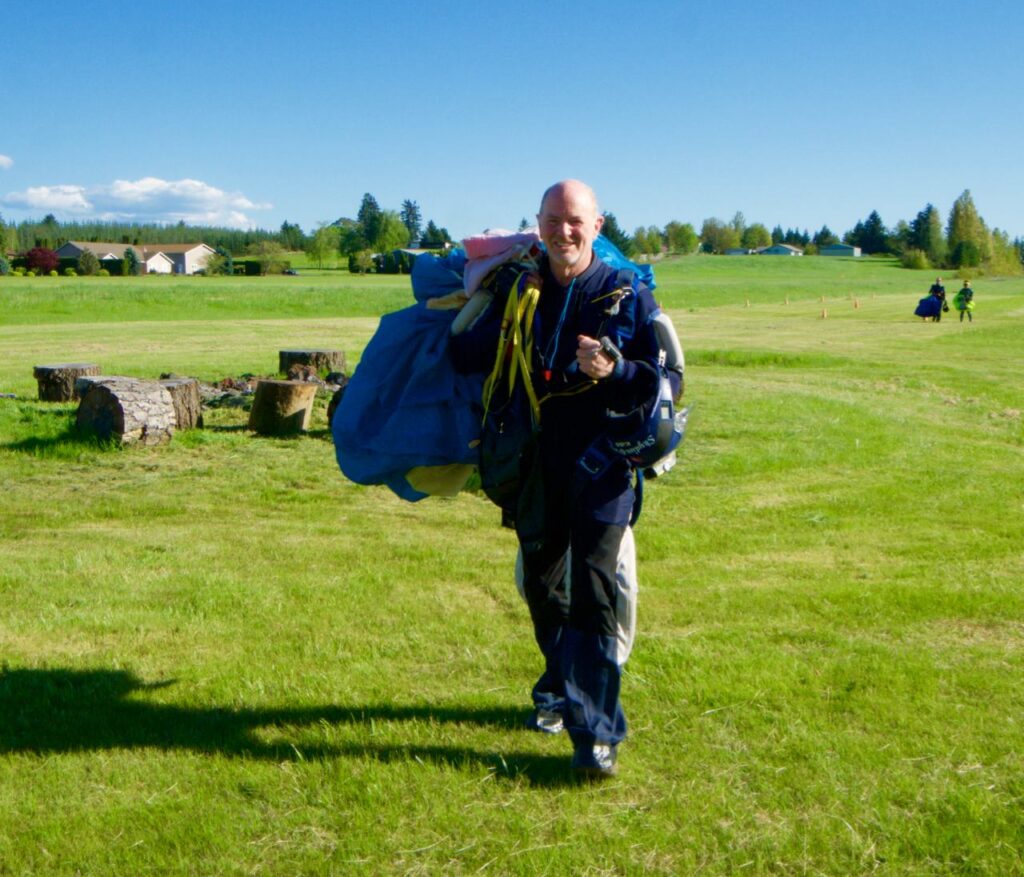
What did you do for work before?
I started commercial fishing with my dad, at age 8. My last commercial fishing job was at age 30. I was a Martial Arts instructor from age 16 to 50 and a Marine Engineer from 1978 to 2007.
And what do you do now?
I’ve been a skydiving cameraflyer from 1990 to present, Rigger 1997 to present and AFF Instructor 2000 to present.
What does that role mean, what do you do day to day?
I maintain 23 tandem rigs and 14 student and rental rigs, as well as the pilot rigs for our drop zone. I also maintain sport jumpers’ gear in the local area. I teach first jump classes and do AFF and coaching jumps with students, guiding them up through their A license.
Tell me about your skydiving highlights
Several state large formation skydiving records. Multiple POPs world records. Other world records , including the current 3-point sequential large formation record skydive in Eloy, AZ in 2017.
I love jumping with new jumpers. Sometimes those are the best jumps.

Photo by Luciano Bacqué
Where do you work?
I currently work pretty much exclusively at my home DZ of Skydive Oregon. But I do have a loft in my house in Washington where I take care of many different pilot rigs and sport rigs for the local aviation community.
What qualifications do you need?
To be an FAA certified rigger you must be 18 years old. Speak read and understand English. Have packed 20 reserves under the supervision of a certified rigger. And be able to do patches and repairs. This is for Senior Rigger.
A Master Rigger needs 100 parachute pack jobs of two different types (seat, back, chest or lap). A Master Rigger has privileges including making major repairs and alterations to parachute equipment he/she is rated for.
What is the ‘normal’ path of progression to that level? Did you follow it?
In my time an apprenticeship under another rigger was typical. I did this in conjunction with the rigger’s course. I think nowadays with more and better courses available, more people are getting their certifications that way than through apprenticeships. I think this is unfortunate. While the courses are very valuable, they don’t give you the broad experience that an apprenticeship does over time. I think a combined approach is the best.
Was it easier or harder than you expected?
The actual rigging examinations were much easier than I expected. However, rigging practice in the field is much more challenging than the rigging you do for a simple rigging examination.
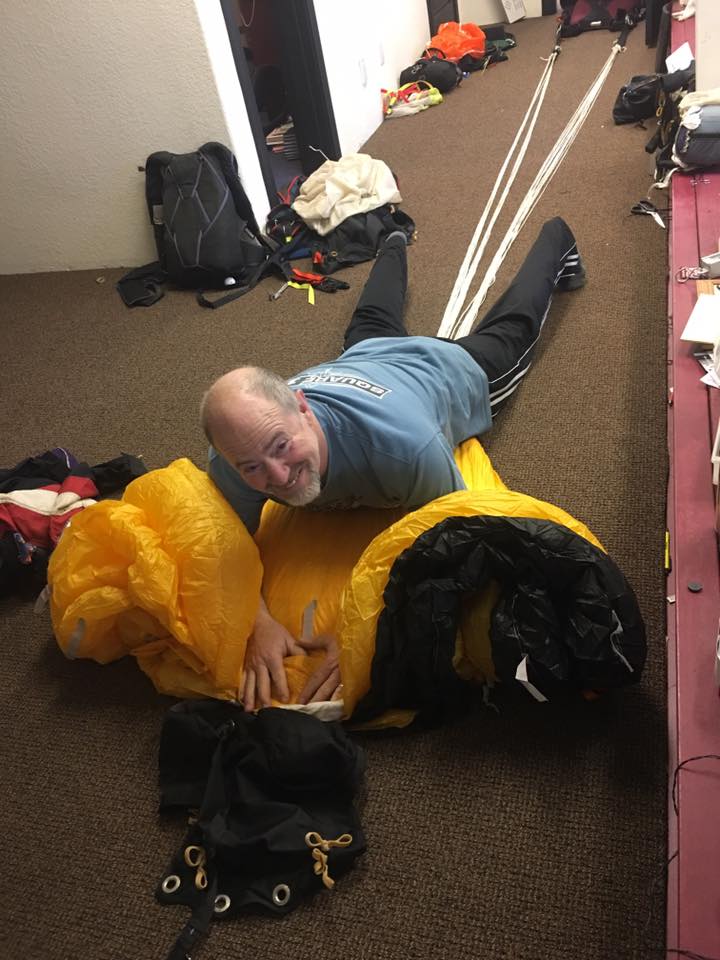
What does the term ‘rigging’ cover?
Packing, maintaining, repairing and determining the airworthiness of parachute equipment.
How much of your work is packing reserves and how much is repairs/altering ?
60 % reserve packing, 39% repairs, 1% alterations. Alterations are best made by the manufacturer (if available), so it’s rare that a Master Rigger would need to do it.
What defines a good rigger from your point of view?
Knowing your skill set and understanding your limitations. Not having an ego with regard to rigging. Knowing when to call for help from the manufacturer or another reliable source.
Do you think you must be a skydiver before you become a rigger or can anyone interested do the job?
While skydiving is not mandatory to be a rigger, I think it is best if the person doing the rigging has some “skin in the game.” All the best riggers I know have a skydiving or military jumping background.
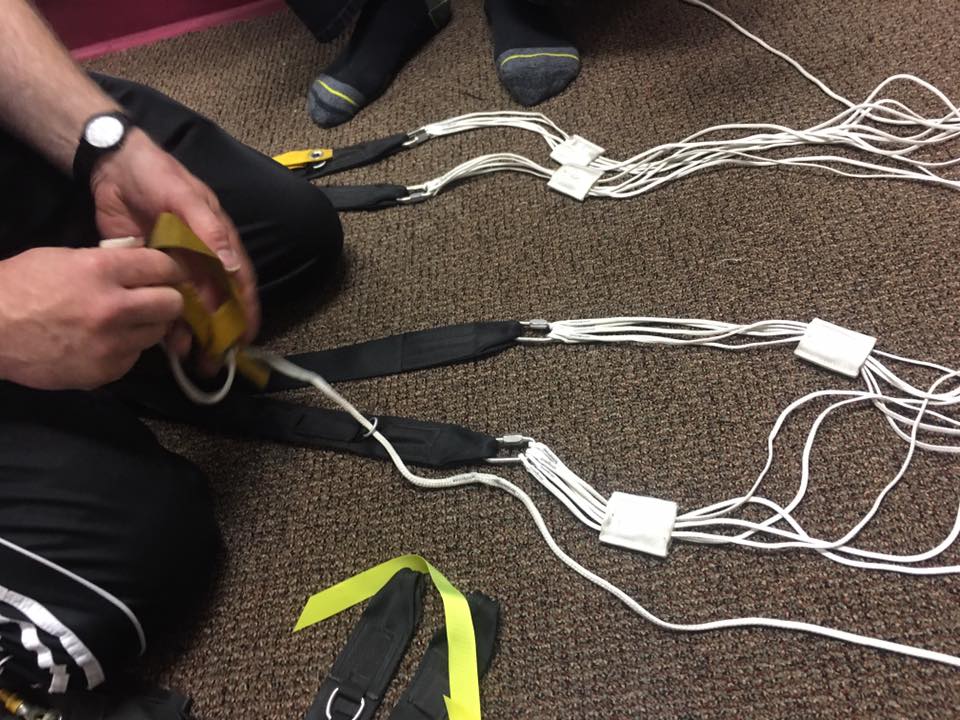
Photo by Patricia MacDonald
What reward do you get?
The satisfaction I get from knowing that my friends and acquaintances and students are jumping safe, solid, and reliable parachute equipment.
How do you feel when someone comes down safely from one of your reserve pack jobs?
I am relieved that they are ok! All I do is pack the parachute. They are the ones who have to initiate proper emergency procedures, at the appropriate time and altitude.
How hard is it keeping up to date with all the different equipment?
Good rigging practices haven’t changed substantially for decades. But, keeping abreast of the current manufacturer’s instructions requires a little research and the occasional phone call to the manufacturer. Rigs are more complex than they used to be. When in doubt, call the manufacturer, or another reliable resource.
Have you created some things for the sport of your own?
In 1981 I created a mesh slider for faster openings, which the BASE community immediately adopted. I don’t know if I invented that, but I was one of the first. I invented a system for an AAD deployment of a hand-deploy pilot chute. This idea never went anywhere until I saw an Eastern Block country’s deployment system on their HALO equipment, which was very similar to what I invented.
Foam-filled puffy sleeves for slow fall rate; Tony Suits now offers a similar option. I helped designed a simple bridged leverage tool for closing reserves, which makes pin access much easier. I designed a lead weight pouch (rather than a belt) which attaches to the harness, rather than the waist.
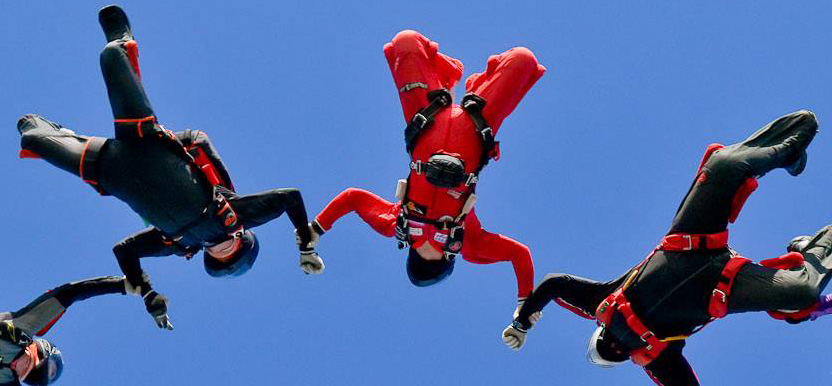
Photo taken over Skydive Algarve by by Ioannis Vlachiotis
Who taught you the most along the way?
The person who had the largest influence on my rigging is probably the rigger who made the error which causes my friend’s fatality. I learned not to be complacent. I learned to check every step, and then double-check every step.
What advice would you give to someone who wants to become a rigger? What do they need to consider?
First, what’s your motivation? Do you want to learn about parachutes in general and use rigging as an avenue for that? Or do you want to pack your own reserves to save money? Or do you want to help the community you jump with? Motivation is very important.
All those reasons are valid and will shape the career path you take. Be aware that with this certification comes tremendous responsibility and liability.
What problems might they encounter along the way and how can they overcome them?
75% of the people who decide to start rigging under my tutelage fall down when it comes to the paperwork. They get their 20 pack jobs and they learn how to sew a patch, the basic anatomy of a parachute system and what to look for during an inspection, and learn how to look up the appropriate regulations and instructions – but they don’t move forward with the actual testing.
The reasons for this are varied, but it mostly comes down to being intimidated by the government testing procedure and the bureaucracy, in my opinion. The way I try to overcome this with my rigging students is by offering them a partial rebate (from the fees I’ve charged them) if they get their rigger’s ticket by a target date. It doesn’t really help them, but it motivates them.
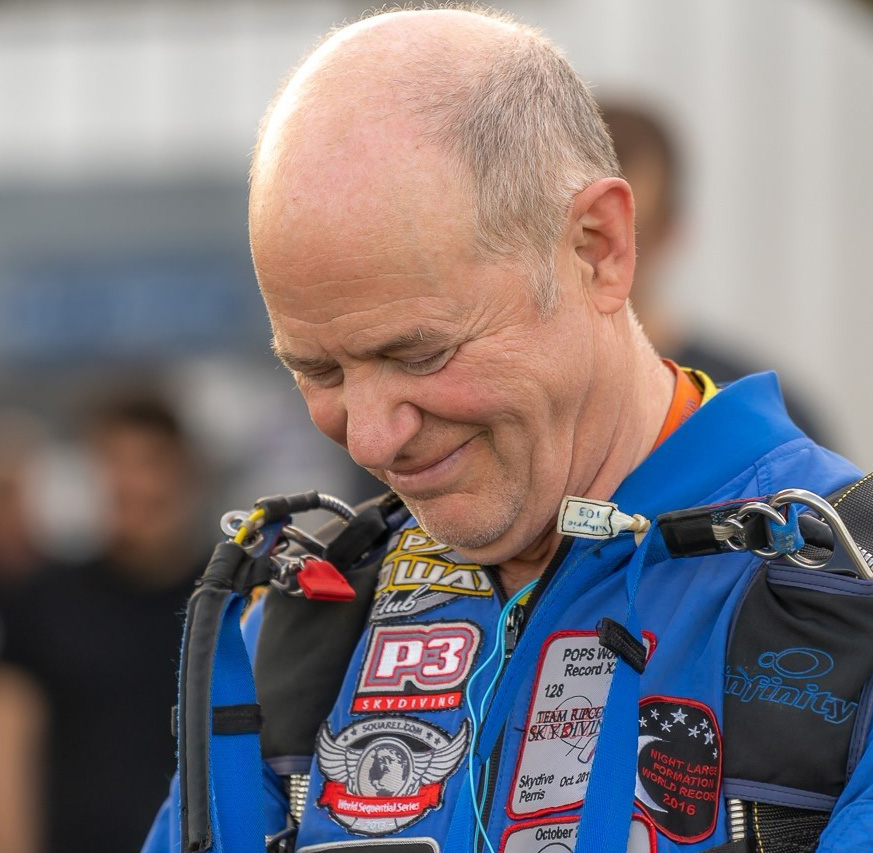
What’s the most important thing to remember about your role?
First: The responsibility that someone is going to trust their life to this equipment. Second: That I don’t know everything and I need to continuously review manuals and learn from other riggers. That’s why I attend the PIA Symposium whenever I can. I always learn something that makes the trip worthwhile.
What was your best rigging experience?
I have many positive experiences in parachute rigging. But something I really enjoy is seeing someone do something differently than the way I do it, and learning from them. Maybe it’s a rigging technique or a trick. Maybe it’s a tool that I hadn’t used or thought of. Maybe it’s a new piece of parachute equipment that I’m not familiar with. I really enjoy LEARNING about the gear in our wonderful sport.
And your worst?!
Many years ago I was packing a very tight reserve. When I tried to put my temporary pin through the loop on the second to the last flap, I poked the loop with the temp pin and damaged the loop. The loop broke while I was pushing on the pin. The pilot chute spring jumped and hit me in the face, and I jammed the temp pin under my thumb nail. It hurt like hell and and elicited from me some colorful vocabulary not appropriate for publication!
What does your future look like? How long do you see yourself as a rigger?
Barring future injuries or illnesses, I plan to continue rigging at least in some capacity until I can no longer physically do it. I may reduce the number of rigs I take care of every year, mainly because I’m getting older and it hurts to bend over, but I just enjoy it so much I can’t see me quitting any time soon.
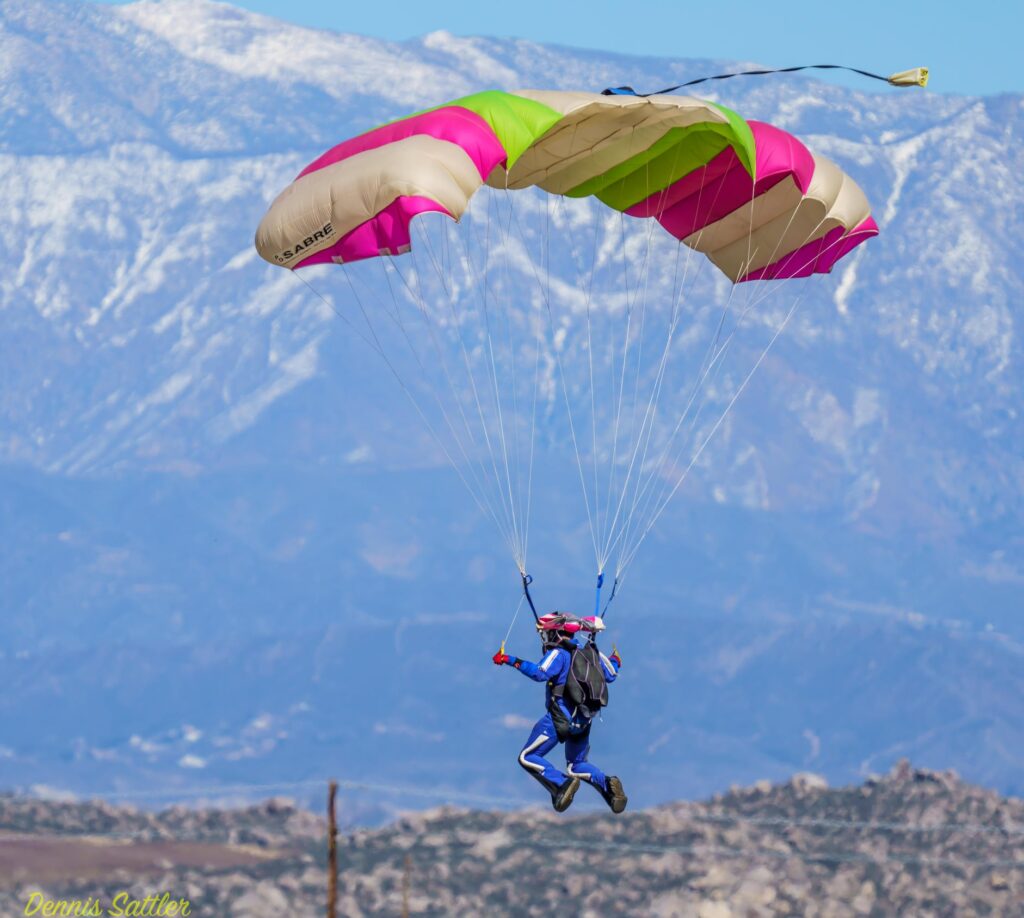
Photo by Dennis Sattler
Anything you’d like to add, Ted?
Parachute rigs in general are becoming more complicated. The simple procedures that we learned back in the day are no longer adequate. To be a good parachute rigger now, requires a broader base of knowledge than it did in the late ‘70s and early ‘80s. This is something that should be addressed by the manufacturers, and the various rigging schools around the country.
Do not become a rigger thinking you’re going to make a living packing reserves. You won’t. At least not a very good one. Do it for the love of parachutes. It can be a very rewarding vocation.
Working in Skydiving Series
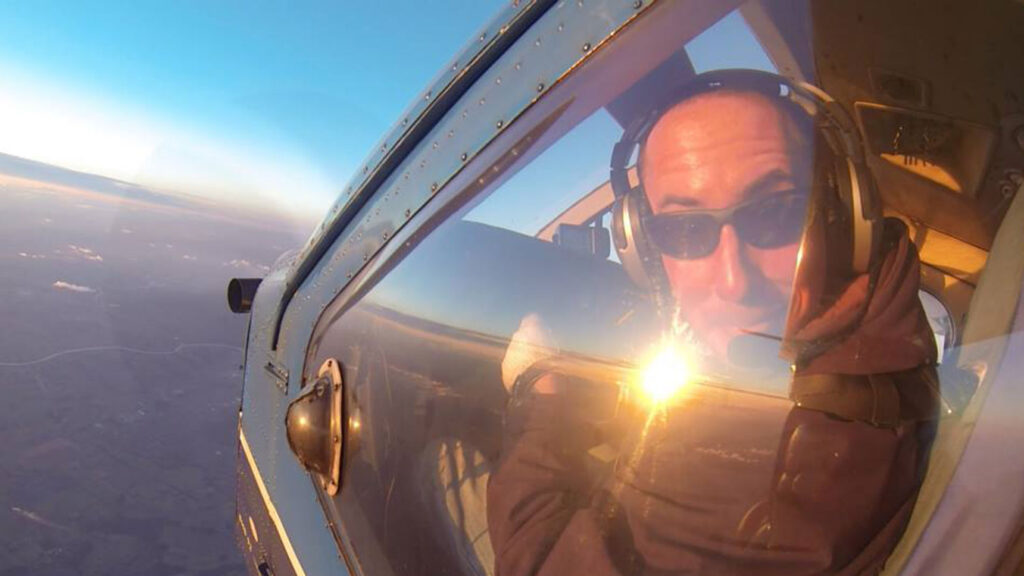
Here are other articles aimed to help you work in your chosen area of the sport:
- So, you wannabe a Freefly Coach?
- So, You Wannabe a Skydiving Instructor?
- So, You Wannabe a Jump Pilot?
- So, You Wannabe a Rigger
- So, you Wannabe a Cameraflyer – part 1 and part 2
- So, You Wannabe a Canopy Piloting Coach
- So, You Wannabe a Packer



